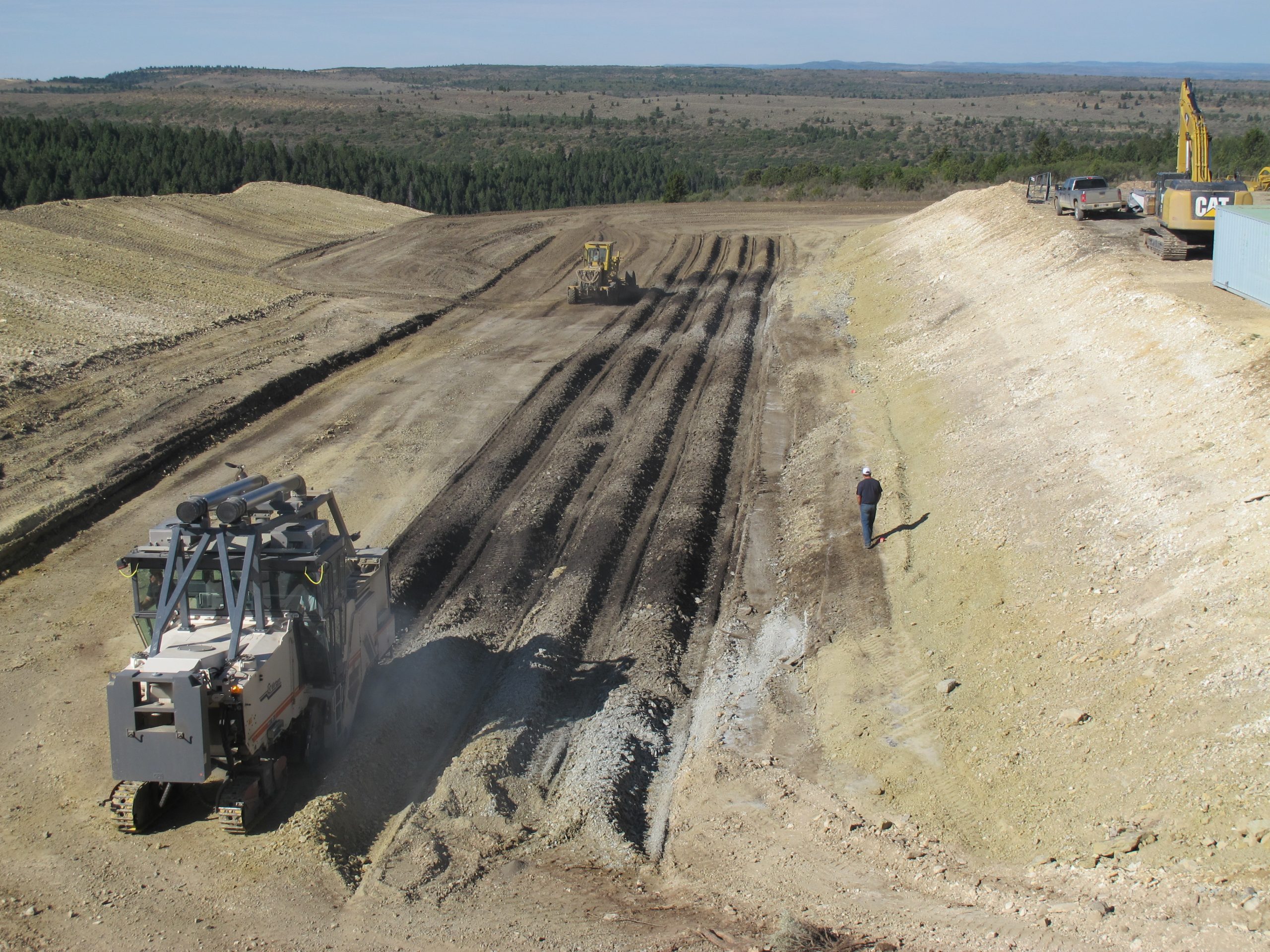Some information may be outdated.
The nation’s first fuel-producing tar sands mine in the Book Cliffs may be operating within a year in a location sixty miles north of Moab.
U.S. Oil Sands, a Canadian-based company, is leasing 32,000 acres of School and Institutional Trust Lands Administration (SITLA) land on the border of Uintah and Grand counties to mine bitumen, a naturally occurring petroleum product that is also known as asphalt.
“Of that land we have a 6,000-acre block where we have most of our activities,” said Barclay Cuthbert, vice president of operations for U.S. Oil Sands. “We are projecting that we will be up and running by the second quarter of 2014.”
Cuthbert said that the 6000-acre block that is in the PR Springs area has as much as 190 million barrels of oil and that his company will be able to produce 2000 barrels of oil a day.
The company has estimated that 75 jobs would be created within the first year, and that more than 500 jobs will be created by the project over the next ten years.
“Based on our resource assessment, there should be sufficient recoverable resource on our mining properties to operate 15 to 20 years,” Cuthbert said. “These should be long-lived jobs. There should be a long run of extraction and processing. We could see multiple facilities on that site and see a 15 to 20 year project on it.”
Moab-based environmental group Living Rivers has been fighting the project by appealing the company’s state permit to mine.
“We first acquired the leases with SITLA in 2005,” Cuthbert said. “I would say the legal challenges and the hearings took longer than we would have expected.”
Living Rivers also went before the Utah Water Quality board stating that the pit mine could contaminate groundwater. An administrative law judge ruled in October that Living Rivers couldn’t prove that the project would pollute groundwater.
Living Rivers’ appeal was also denied by the state’s Division of Oil and Gas Mining in January.
“We’re working with Division of Water Quality to make sure the operation is safe,” Cuthbert said.
John Weisheit, Living Rivers’ conservation director, said that the PR Springs area affects the watersheds of the White, Green and Colorado rivers.
“They are perched right on the divide of those three canyons,” Weisheit said.
Utah regulators said the project site is isolated from nearby springs and seeps, and that test drills hit no groundwater until a depth of 1,800 feet.
A geologist, Robert Herbert, testified for the state in May hearings that he had never seen so many holes drilled at any energy project site. U.S. Oil Sands said it drilled 210 bores, hitting water only at one at extreme depth. That will supply the water needed to wring waxy crude oil from a pit 150 feet deep.
Due to the lack of water in the area, U.S. Oil Sands will be using a citrus-based solvent to separate the oil from the sand.
Weisheit said that it might sound environmentally friendly, but he is still skeptical.
“They won’t tell us what is in the solvent. If it was truly benign and wasn’t hurting anybody, why won’t they tell us?” he asked. “It doesn’t matter what the solvent is. The tar sands are inert. They don’t pollute. They’re sitting there rotting away. But once you put a solvent in and liberate the hydrocarbons and it becomes a threat to drinking water.”
U.S. Oil Sands is now working with Grand County’s planning commission for a conditional use permit.
U.S. Oil Sands government liaison Randy Johnson said that Grand County has a fairly complicated process. Cuthbert concurred.
“The information that is required is quite intensive,” Cuthbert said. “It has taken us some time to generate the information required.”
Once the company submits the conditional use permit application, it will be reviewed by the planning commission and a public hearing will be held. Should the planning commission approve the permit, it will go to the Grand County Council for review and a second public hearing before the permit is granted.
Grand County Council chair Gene Ciarus said that the state determines whether the company can mine, not the county.
“They don’t need the county’s approval to mine that land,” Ciarus said. He said the county’s role is limited to approving the conditional use permit. “They need a conditional use permit for roads and such like that. It is the state that licenses the state land.”
Uintah County is now in the process of paving Seepridge Road to facilitate traffic for U.S. Oil Sands’ operations. Cuthbert said that the 45-mile stretch between Hwy 40 and the county line dividing Uintah and Grand counties should be fully paved by the end of 2014.
“Uintah County has been very supportive,” Cuthbert said. “That’s not to say that Grand County hasn’t. We just haven’t developed those relationships to the same extent as we have in Uintah County.”
Cuthbert said that extending Seepridge Road through the Grand County side of the Book Cliffs would improve their proposed operations.
“Road conditions are a concern,” Cuthbert said. “It would be advantageous to have a road to I-70, where we could use the Union Pacific Railway to move the bitumen from our site to refiners. We’d be very supportive of those roads for sure.”
Appreciate the coverage? Help keep local news alive.
Chip in to support the Moab Sun News.





